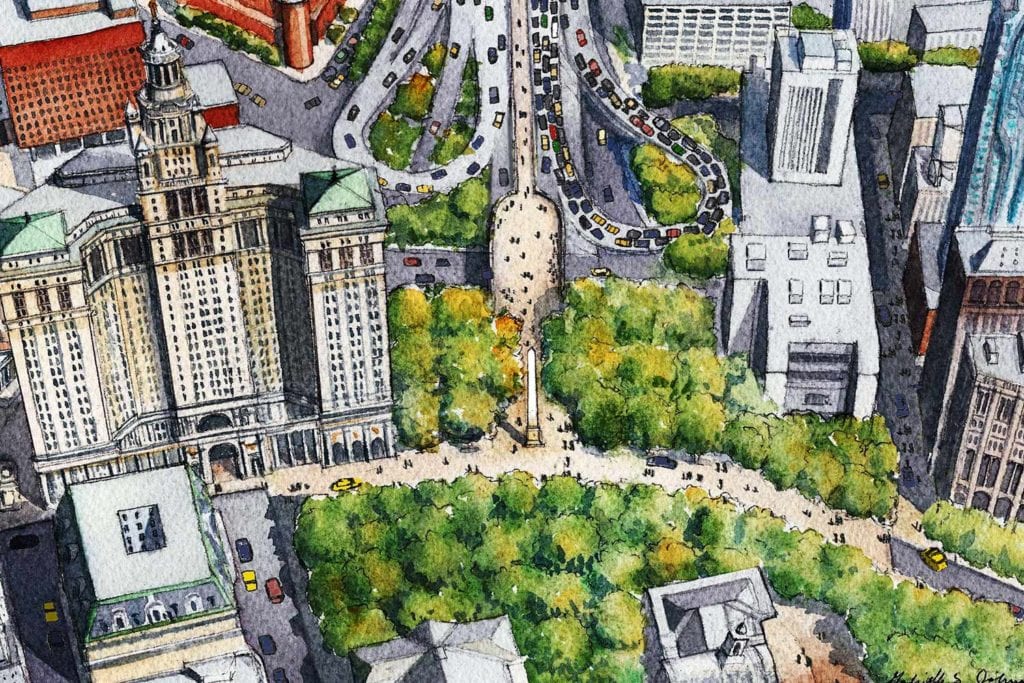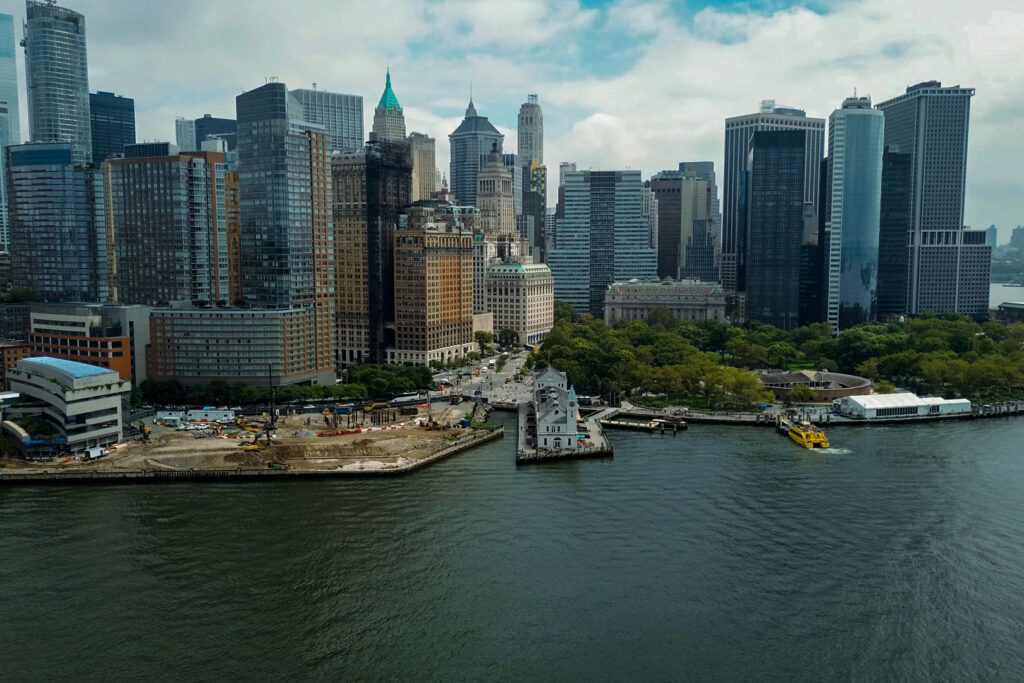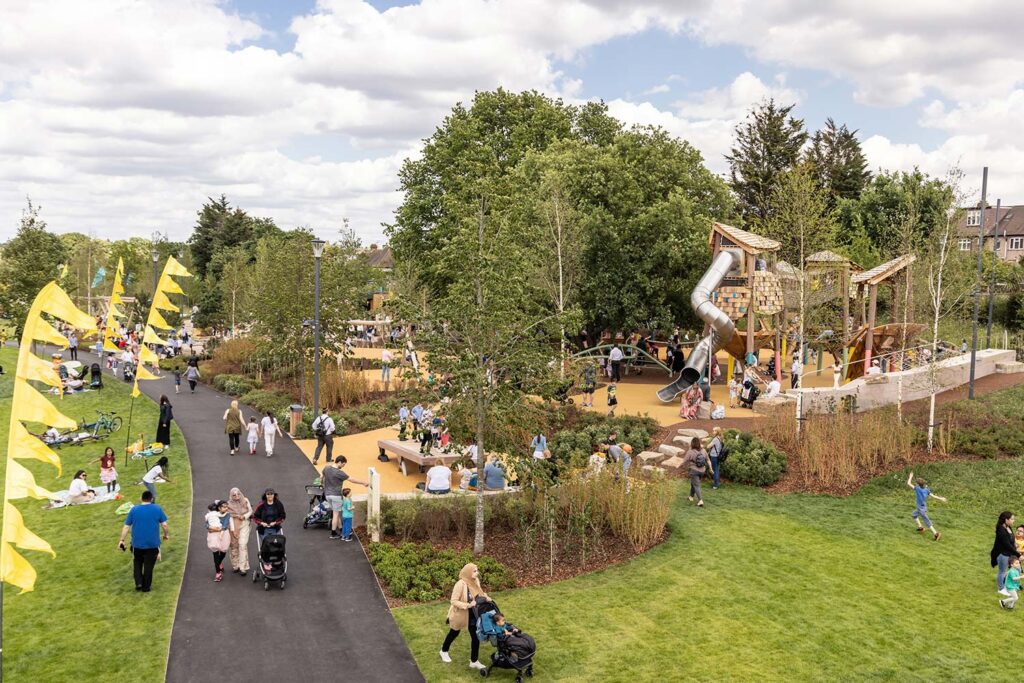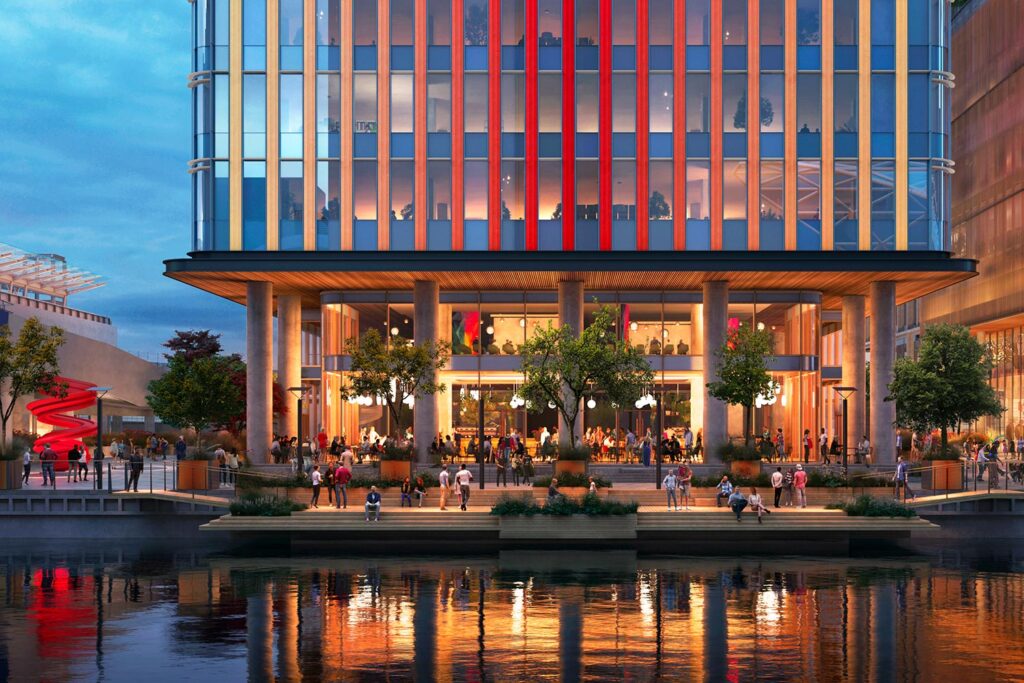
Reconnecting a historic neighborhood
Make Way for Lower Manhattan
New York, USA
Project details
Client
The J. M. Kaplan Fund
Collaborator
Appleseed, DVS Security Consulting, Publica, RES Group, Sam Schwartz Engineering, WXY Architecture & Urban Design
Duration
Ongoing
Services provided by Buro Happold
The Lower Manhattan area has changed significantly over the last few decades, evolving from a mainly commercial area to a mixed-use district featuring shops, restaurants, hotels and apartments.
The changing needs of the local community and a significant increase in tourism has meant that the streetscape and public areas have become disjointed and badly planned, with issues including traffic safety, trash collection and high air pollution levels.
Using our familiarity with the Lower Manhattan area, the Buro Happold team in New York secured funding from the J.M Kaplan Fund and recruited a multidisciplinary team to address the numerous planning issues.
Challenge
Manhattan’s growth is showing no signs of slowing down. Residential and tourist numbers have effectively doubled since the turn of the 21st Century, attracting numerous new businesses into the area. The challenge for our team was to quantify the issues the district is faced with and identify opportunities to make improvements. This included aspects ranging from traffic enforcement through to making public spaces more accessible to the community.

Solution
Our team led a number of community workshops throughout the project to fully understand the problems Manhattan businesses and residents were facing. The project team heard an overwhelming consensus from public agencies, cultural institutions, neighborhood groups and business organizations that dramatic interventions are needed to improve vehicle movement, increase public space, facilitate movement between key destinations and enhance the environment for all of the district’s users.
We worked with the project team and key stakeholders to put together a series of reports that will act as a catalyst for change, outlining the challenges the area faces and presenting possible solutions. To improve the community space, our proposals include establishing a tourist trail and art walk, linking the area’s numerous museums, sculptures, parks and historic places and expanding the public space at Bowling Green. With the aim of improving traffic movement, we have proposed changing the timing of residential rubbish removal so that it does not coincide with peak hour commuting and managing through traffic via series of ‘shared streets’. Our team has also proposed measures to re-link the Brooklyn Bridge with City Hall Park by redesigning the vehicle access ramps.

Value
Using our experience of city design alongside our knowledge of Manhattan, we have been able to prepare discreet analysis that provides a set of actions that will be instrumental to improving the area. The Buro Happold led team has presented the findings to high-level city officials and is working with local stakeholders and philanthropic sponsors across the neighborhood and beyond to identify next steps and pilot projects to demonstrate the potential future for the public realm of Lower Manhattan.










